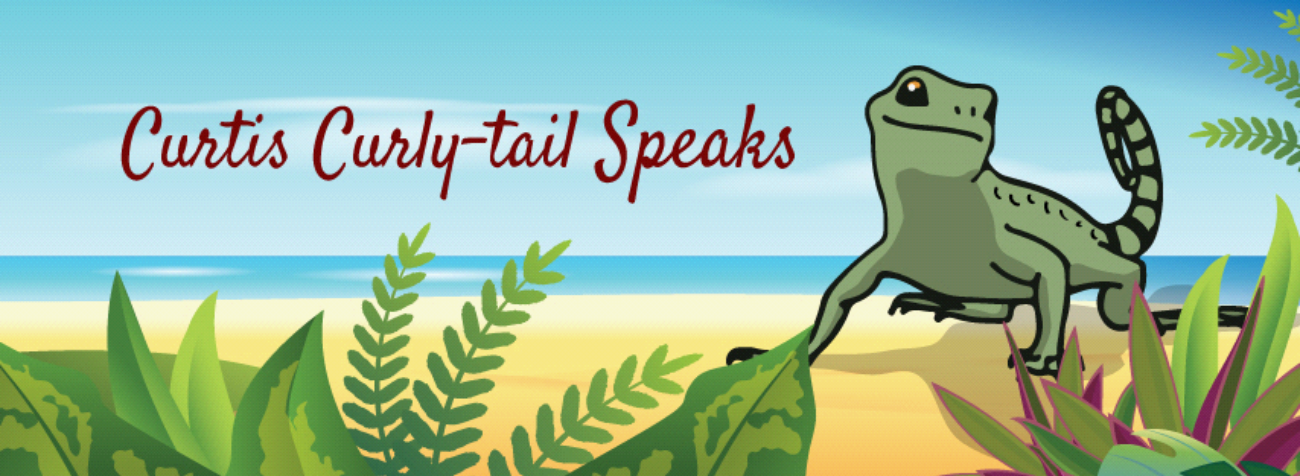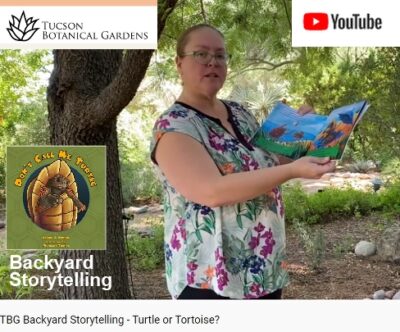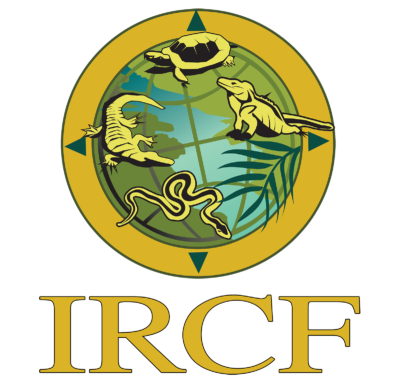The Unfortunate Case of Baked Shellfish
I like to visit the ocean now and then. Living in the desert, I miss large bodies of water, especially salty ones. I prefer flat sandy beaches, strolling along in the gently lapping waves. One of my favorite beaches is Bunche Beach at the end of John Morris Road in Fort Myers, FL. Most visitors prefer the beach during the winter, but I like to go during the summer when people are few, and I often have the beach to myself. I walk during low tide to search for sea creatures.
Meet the Sunray Venus
One bivalve mollusk I often find shells of is the Sunray Venus clam, Macrocallista nimbosa. This clam has winged shells with beautiful colors and striking patterns.
Interestingly, the pattern is always different on the two sides. You’d expect the two sides of the shell to match, but they don’t.
When alive, these clams bury themselves in the sand, often near grass beds. They extend their siphons during high tide and filter their food out of the water as they pump it through their bodies. Usually, they are eating plankton, organisms that float in the water.
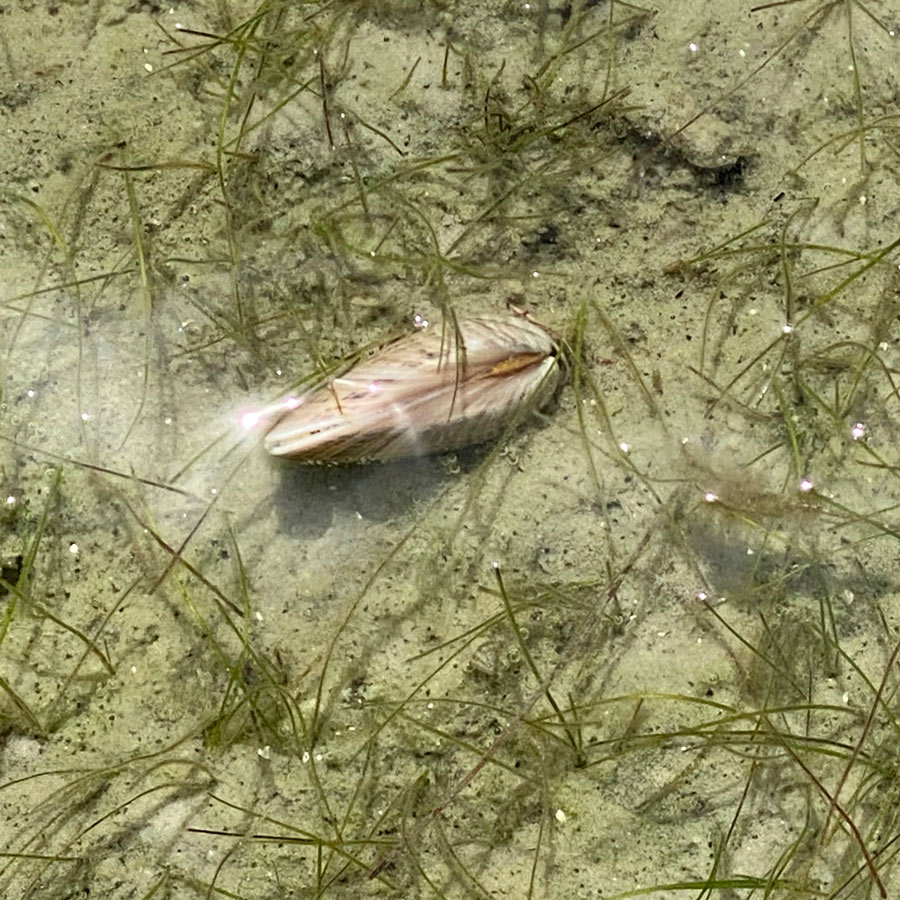
A live Sunray Venus clam in a grass bed.
These are nice-sized clams, and I always enjoy seeing them as I walk the beach. I’ve collected quite a few pairs of empty shells over the years. I only take the empty shells, never any live mollusks. Some scientists feel that the empty shells should also be left because they contribute to the natural formation of the beaches. Removal might also impact the erosion rate.
Many people eat Sunray Venus clams – they have even been grown commercially for human consumption. The original Florida residents, Calusa Indians, ate these clams. I hadn’t thought about eating them until my most recent visit. It was in early August, during a heat wave in Fort Myers. The air temperatures were in the high 90s with high humidity. Surprisingly, or not surprisingly, the ocean water temperature was also in the high 90s.

The sunray venus clams left out of the water during low tide died from the heat. The mollusks were literally baking. Usually, the clams can clamp their shells together tight enough to prevent water loss. But the heat stressed them, resulting in the shells opening and the animal dying. It was heartbreaking to witness. However, the scavengers were enjoying the feast.
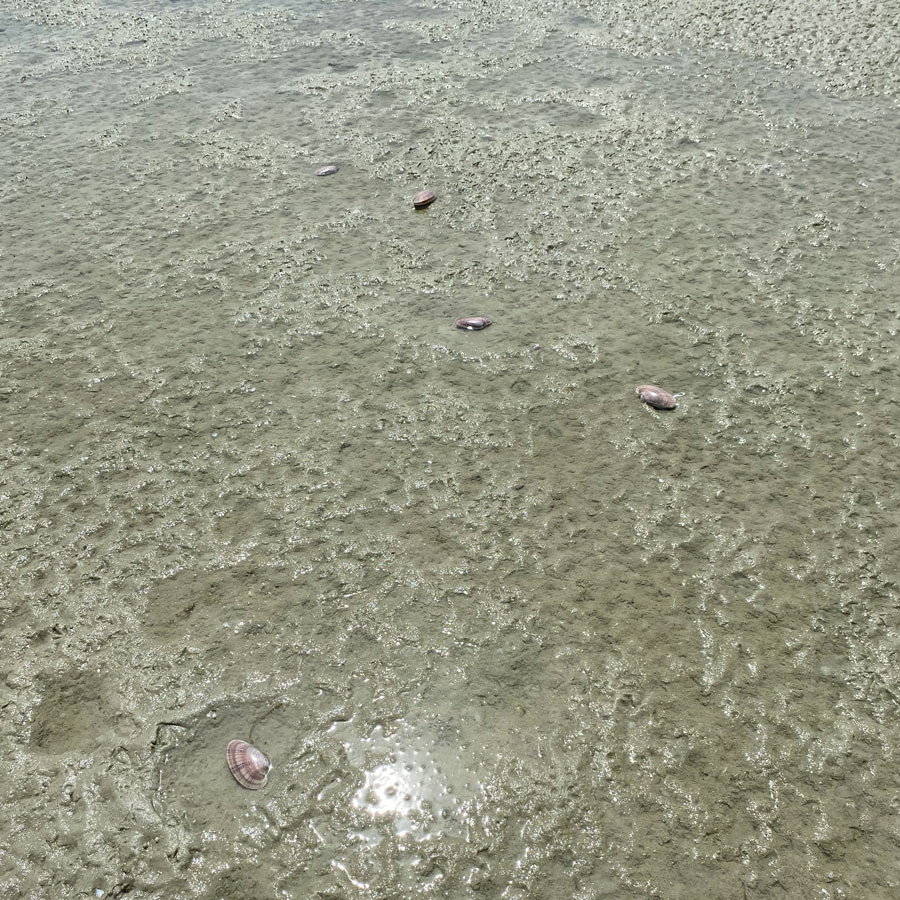
Sunray Venus mollusks were dying on the sand during low tide.

The shells open when the mollusk dies, revealing the animal inside.
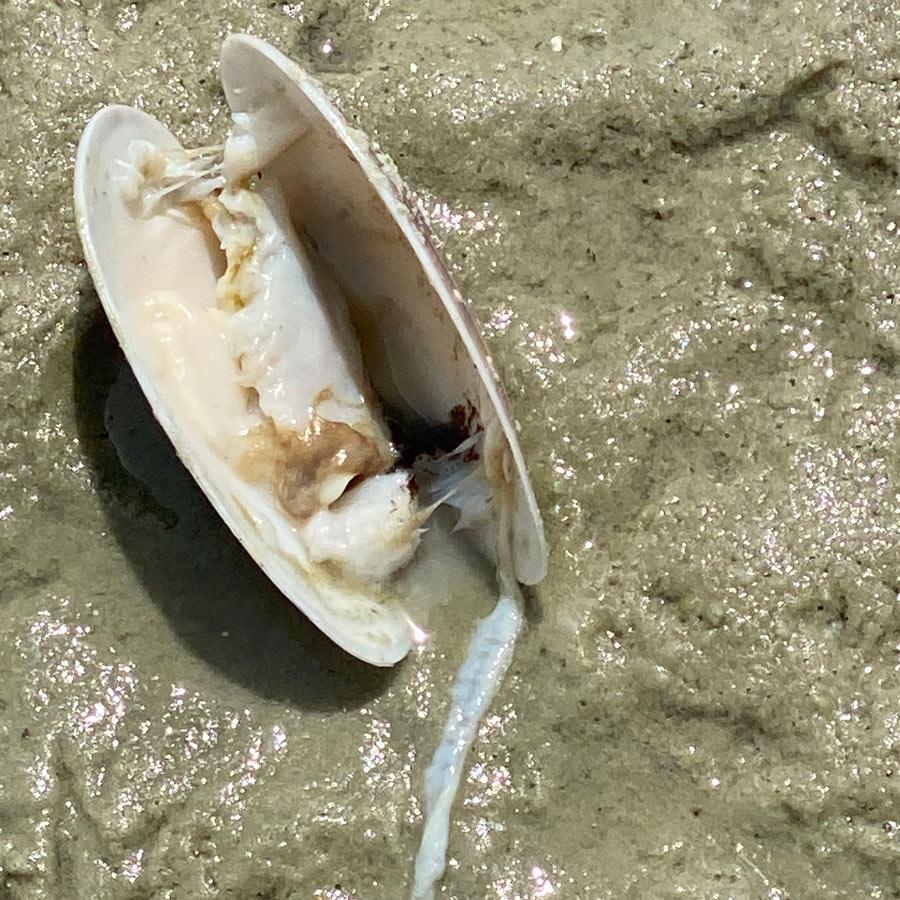
Hundreds of these clams of all sizes were dying. I tried to throw as many into deeper water that looked like they were still alive, but I could only find a few.
A Questionable Cause
The loss of life was disturbing. I hope this was a typical event and not the result of the excessive heat. I hadn’t visited this beach in the middle of August before. When I lived in the area during the summers in college, the ocean water temperature would get quite warm. But is the current temperature higher than usual, and is it lasting longer than average? More information is needed. I’m curious to see if the clam population changes due to this tragic die-off. I hope this is a natural event, not the result of man’s environmental impact.
I hope to see live Sunray Venus clams on Bunche Beach someday.
To learn about our latest science-based children’s books and workbooks, to read our latest blog posts about reptiles, birds, cats, and gardening, in a variety of locations, and about how the books come to be, what inspires an author to write, and many more interesting aspects of the publishing business, fill in the box below and we will add you to our email list.
Thank you!
